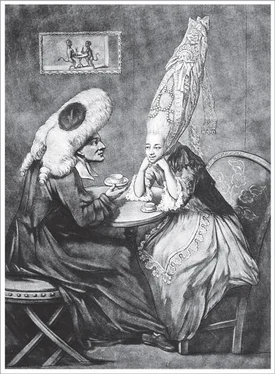Bill Bryson - At Home
Здесь есть возможность читать онлайн «Bill Bryson - At Home» весь текст электронной книги совершенно бесплатно (целиком полную версию без сокращений). В некоторых случаях можно слушать аудио, скачать через торрент в формате fb2 и присутствует краткое содержание. Жанр: Старинная литература, на английском языке. Описание произведения, (предисловие) а так же отзывы посетителей доступны на портале библиотеки ЛибКат.
- Название:At Home
- Автор:
- Жанр:
- Год:неизвестен
- ISBN:нет данных
- Рейтинг книги:4 / 5. Голосов: 1
-
Избранное:Добавить в избранное
- Отзывы:
-
Ваша оценка:
- 80
- 1
- 2
- 3
- 4
- 5
At Home: краткое содержание, описание и аннотация
Предлагаем к чтению аннотацию, описание, краткое содержание или предисловие (зависит от того, что написал сам автор книги «At Home»). Если вы не нашли необходимую информацию о книге — напишите в комментариях, мы постараемся отыскать её.
At Home — читать онлайн бесплатно полную книгу (весь текст) целиком
Ниже представлен текст книги, разбитый по страницам. Система сохранения места последней прочитанной страницы, позволяет с удобством читать онлайн бесплатно книгу «At Home», без необходимости каждый раз заново искать на чём Вы остановились. Поставьте закладку, и сможете в любой момент перейти на страницу, на которой закончили чтение.
Интервал:
Закладка:
Guests brought their own servants, too, so at weekends it was not unusual for the number of people within a country house to swell by as many as 150. Amid such a mass of bodies, confusion was inevitable. On one occasion in the 1890s Lord Charles Beresford, a well-known rake, let himself into what he believed was his mistress’s bedroom and with a lusty cry of “Cock-a-doodle-doo!” leaped into the bed only to discover that it was occupied by the Bishop of Chester and his wife. To avoid such confusions, guests at Wentworth Woodhouse, a stately pile in Yorkshire, were given silver boxes containing personalized confetti, which they could sprinkle through the corridors to help find their way back to, or between, rooms.
Everything tended to be on a grand scale. The kitchen at Saltram, a house in Devon, had six hundred copper pots and pans, and that was pretty typical. The average country house might have as many as six hundred towels, and similarly vast quantities of sheets and linens. Just keeping everything marked, recorded, and correctly shelved was a monumental task.
Servants at all levels put in long hours and worked hard. Writing in 1925, one retired servant recalled how early in his career he had had to light a fire, polish twenty pairs of boots, and clean and trim thirty-five lamps, all by the time the rest of the household began to stir. As the novelist George Moore wrote from experience in his memoir Confessions of a Young Man , the lot of the servant was to spend seventeen hours a day “drudging in and out of the kitchen, running upstairs with coals and breakfasts and cans of hot water, or down on your knees before a grate.… The lodgers sometimes threw you a kind word, but never one that recognized you as one of our kin; only the pity that might be extended to a dog.”
Before the advent of indoor plumbing, water had to be carried to each bedroom and then taken away again once used. As a rule, each active bedroom had to be visited and refreshed five times between breakfast and bedtime. And each visit required a complicated array of receptacles and cloths so that, for instance, fresh water didn’t ever come up in the same receptacle that wastewater went down in. The maid had to carry three cloths—one for drinking glasses, one for commodes, and one for wash basins—and remember (or be sufficiently unpeeved with her mistress) to use the right ones on the right objects. And that of course was just for general light washing. If a guest or family member wished for a bath, the workload rose dramatically. A gallon of water weighs eight pounds, and a typical bath held forty-five gallons, all of which had to be heated in the kitchen and brought up in special cans—and there might be two dozen or more baths to fill of an evening. Cooking likewise often required enormous strength and reserves of energy. A full cooking kettle could weigh sixty pounds.
Furniture, fire grates, drapes, mirrors, windows, marble, brass, glass, and silver—all had to be cleaned and polished regularly, usually with their own particular brand of homemade polish. To keep steel knives and forks gleaming, it wasn’t enough to wash and polish them; they had to be vigorously stropped against a piece of leather on which had been smeared a paste of emery powder, chalk, brick dust, crocus, or hartshorn liberally mixed with lard. Before being put away, knives were greased with mutton fat (to defeat rusting) and wrapped in brown paper, and so had to be unwrapped, washed, and dried before they could be used again. Knife cleaning was such a tedious and heavy process that a knife-cleaning machine—essentially a box with a handle to turn a stiff brush—became one of the very first labor-saving appliances. One was marketed as “The Servant’s Friend.” Doubtless it was.
It wasn’t just a question of doing the work, but often of doing it to the kind of exacting standards that generally occur only to people who don’t have to do the work themselves. At Manderston, a stately home in Scotland, a team of workers had to devote three full days twice a year to dismantling, polishing, and then reassembling a grand staircase. Some of the extra work was as demeaning as it was pointless. The historian Elisabeth Donaghy Garrett notes one household in which the butler and his staff were required to put down spare stair carpet around the dining room table before setting it so as not to tread on the good carpet. One maid in London complained that her employers made her change out of her work clothes and into something more presentable before being sent out into the street to hail a cab for them.
The provisioning of households was an enormous preoccupation. Often groceries were brought in just two or three times a year, and stored in bulk. Tea was purchased by the chest, flour by the barrel. Sugar came in large cones called loaves. Servants became adept at preserving and storing items for long periods. They also had to make the materials with which their work could be done. If you needed to starch a collar or polish shoes, you had to concoct your own ingredients. Commercial boot polishes didn’t become available until the 1890s. Before that it was necessary to boil up a supply of polish at home, a process that stained not only boots but also pots, stirring spoons, hands, and anything else the mixture came into contact with. Starch had to be laboriously made from rice or potatoes. Even linens didn’t come in a finished state. One bought bolts of cloth and had them made up into tablecloths, sheets, shirts, towels, and so on.
Most large households had a still room for distilling spirits, and here were brewed an exhaustive repertoire of items—inks, weedkillers, soap, toothpaste, candles, waxes, vinegars and pickles, cold creams and cosmetics, rat poisons, flea powders, shampoos, and medicines, as well as solutions for removing stains from marble, for taking the shine off trousers, for stiffening collars, and even for removing freckles. (A combination of borax, lemon juice, and sugar was said to do the trick.) These treasured concoctions could involve any number of ingredients—beeswax, bullock’s gall, alum, vinegar, turpentine, and others even more startling. The author of one mid-nineteenth-century manual recommended that paintings be cleaned annually with a mixture of “salt and stale urine,” though whose urine and how stale were left to the reader to determine.
Many houses were so filled with pantries, storerooms, and other service areas that the greater part of the house actually belonged to the servants. In The Gentleman’s House (1864), Robert Kerr stated that the typical stately home had two hundred rooms (counting all storage spaces), of which almost exactly half were household offices—which is to say rooms devoted to servants and their tasks, or their bedrooms. When stables and other outbuildings were added in, the property was overwhelmingly in the servants’ control.
The division of labor behind the scenes could be enormously complicated. Kerr divided the suites of offices into nine categories: kitchen, bakery and brewery, upper servants’ hall, lower servants’ hall, cellars and outhouses, laundry, private rooms, “supplementaries,” and thoroughfares. Other homes used different reckonings. Florence Court in Ireland had more than sixty departments, while Eaton Hall, the Cheshire seat of the Duke of Westminster, got by with just sixteen—quite a modest number bearing in mind that he had more than three hundred servants. It all depended on the organizational predispositions of master, mistress, butler, and housekeeper.
A large country house was likely to have a gun room, lamp room, still room, pastry room, butler’s pantry, fish store, bake house, coal store, game larder, brewery, knife room, brush room, shoe room, and at least a dozen more. Lanhydrock House in Cornwall had a room exclusively for dealing with bedpans. Another in Wales, according to historian Juliet Gardiner, had a room set aside for ironing newspapers. The grandest or oldest homes might also have a saucery, a spicery, a poultery, a buttery, and other rooms of more exotic provenance, such as a ewery (a room for keeping water jugs, the word somehow derived from aquaria ), a chandry (for candles), an avenery (for game beasts), and a napery (for linen).
Читать дальшеИнтервал:
Закладка:
Похожие книги на «At Home»
Представляем Вашему вниманию похожие книги на «At Home» списком для выбора. Мы отобрали схожую по названию и смыслу литературу в надежде предоставить читателям больше вариантов отыскать новые, интересные, ещё непрочитанные произведения.
Обсуждение, отзывы о книге «At Home» и просто собственные мнения читателей. Оставьте ваши комментарии, напишите, что Вы думаете о произведении, его смысле или главных героях. Укажите что конкретно понравилось, а что нет, и почему Вы так считаете.












